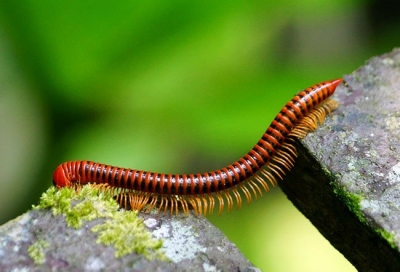
The millipede, like the centipede, is not an insect, nor does it have a thousand feet. It has a worm-like segmented body with up to 240 legs.
Young millipedes have only six legs but extra legs grow as they mature.
Millipedes are found in every U.S. state, including Alaska and Hawaii, as well as in Puerto Rico and the U.S. Virgin Islands. Moist soil beneath decaying leaf litter or mulch is a millipede’s prime habitat. Millipedes lack stingers or pinchers to fend off predators like birds, toads, and small mammals. Instead they rely on their hard exoskeleton as a first line of defense. Some species can even produce hydrogen cyanide, a noxious liquid that is toxic to small animals. Millipedes sometimes find their way into basements, but they’re mostly harmless to homes and people.
Millipedes lay their eggs in the soil each spring. When the offspring hatch, they have only a few pairs of legs. After each molt, they gain new segments and legs until they reach adulthood. After molting, millipedes consume their exoskeletons to gain back valuable nutrients.
Millipede lifespans vary widely among species. Non-native giant African millipedes are often kept as pets and can live upward of seven years.
Credit : The National Wildlife Federation
Picture Credit : Google




